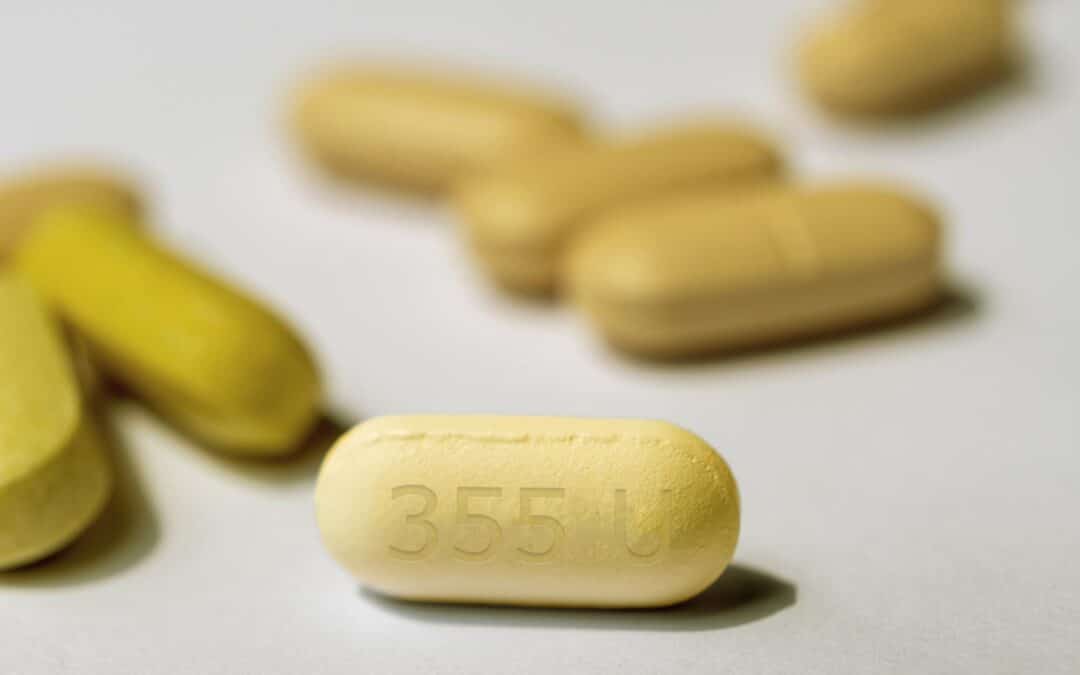Understanding Precipitated Withdrawal: A Deep Dive into Opioid Recovery’s Unexpected Challenge
In the journey of opioid recovery, individuals often encounter various challenges, from the emotional toll of breaking an addiction to the physical symptoms of withdrawal. However, one particular challenge remains less understood yet profoundly impactful: precipitated withdrawal. Unlike the gradual onset of typical withdrawal symptoms, precipitated withdrawal strikes suddenly, often catching individuals off-guard and intensifying their struggle. As the opioid crisis continues to grip the nation, understanding this phenomenon becomes crucial not only for those undergoing recovery but also for healthcare professionals, caregivers, and loved ones. In this article, we’ll unravel the intricacies of precipitated withdrawal, exploring its causes, symptoms, and the best strategies for management. Whether you’re personally affected or seeking knowledge, this comprehensive guide aims to shed light on a critical aspect of opioid use disorder (OUD) and its treatment.
Symptoms of Precipitated Withdrawal: Recognizing the Signs
When it comes to opioid recovery, understanding the difference between standard withdrawal and precipitated withdrawal is crucial. While both can be uncomfortable, the latter is often described as the more intense and sudden counterpart.
What Triggers the Symptoms?
Unlike spontaneous withdrawal, which emerges gradually after ceasing opioid use, precipitated withdrawal is induced by certain medications. Common culprits include opioid antagonists like naloxone and partial agonists like buprenorphine. These medications, while beneficial in treating opioid use disorder (OUD), can inadvertently lead to a rapid onset of withdrawal symptoms if not administered correctly.
Spotting the Symptoms
The experience of precipitated withdrawal is often likened to slamming on the brakes in a car, as opposed to a gentle, gradual stop. The symptoms are not just intensified; they manifest suddenly, making them particularly disorienting. Key symptoms to watch out for include:
- Intense pain and anxiety: A stark contrast to the euphoria and pain relief associated with opioid highs.
- Diarrhea and nausea: Digestive disturbances are common and can be accompanied by vomiting.
- Physical manifestations: Symptoms like runny nose, goosebumps, chills, and headaches are telltale signs.
- Mood disturbances: Increased irritability, restlessness, and mood swings.
It’s essential to recognize these symptoms early, especially if someone is undergoing treatment for OUD. Early detection can lead to quicker intervention, reducing the discomfort and potential complications associated with precipitated withdrawal.
Why Does Precipitated Withdrawal Happen? The Science Behind the Symptoms
Understanding the root cause of precipitated withdrawal requires a closer look at the intricate dance of chemicals and receptors in our body. At the heart of this phenomenon lies the interaction between opioids and their corresponding receptors.
The Role of Opioid Receptors
Our body is equipped with opioid receptors, primarily located in the brain and spinal cord. Think of these receptors as locks waiting for the right key. When an individual consumes opioids, these drugs act as keys, fitting into these locks and activating them. This activation results in the well-known effects of opioids, such as pain relief, warmth, and euphoria.
Agonists, Antagonists, and Partial Agonists
There are different types of opioid-related substances that interact with these receptors:
- Opioid Agonists: These are substances like morphine, fentanyl, and heroin. They act as perfect keys, fully activating the opioid receptors.
- Opioid Antagonists: Substances like naloxone and naltrexone fall into this category. They fit into the opioid receptors but don’t turn the lock. Instead, they block the receptor, preventing it from being activated by other opioids.
- Partial Opioid Agonists: Buprenorphine is a prime example. It’s like a key that only partially turns the lock. It occupies the receptor and prevents full activation but does activate it to some extent.
The Onset of Precipitated Withdrawal
In individuals physically dependent on opioids, introducing an opioid antagonist or a partial agonist can lead to a sudden drop in the activation of opioid receptors. This rapid decrease in signaling is what triggers the symptoms of precipitated withdrawal.
For instance, if someone dependent on opioids (full agonists) is given buprenorphine (a partial agonist) too soon, the partial activation might not be enough to satisfy the body’s opioid needs, leading to withdrawal symptoms. Similarly, if an antagonist like naloxone is introduced, it can block the receptors, causing a sudden cessation of opioid effects and triggering withdrawal.
A Common Misconception
It’s worth noting a prevalent misconception regarding buprenorphine/naloxone combinations, such as Suboxone. Many believe that the naloxone component causes precipitated withdrawal. However, in reality, when used as directed (sublingually), the naloxone remains inactive. Its primary role is to deter misuse of the medication.
Duration of Precipitated Withdrawal: How Long Does It Last?
When you face precipitated withdrawal, one of the first questions that might come to mind is, “How long will this last?” The duration can vary based on several factors:
- Metabolism: Faster metabolisms can process substances more quickly.
- Opioid Use History: Your past usage can influence the duration.
- Overall Health: General health can impact how your body responds to withdrawal.
On average, without intervention, the symptoms can last from several hours up to a couple of days.
Treatment Options: Finding Relief
Facing precipitated withdrawal is challenging, but you don’t have to endure it without help. Here are some ways to manage the symptoms:
1. Medication:
- Buprenorphine: Even if it played a role in causing the withdrawal, buprenorphine can help alleviate the symptoms. It provides partial activation of opioid receptors, offering relief without the risk of overdose.
- Over-the-Counter Aids: Medications like loperamide (for diarrhea) or ibuprofen (for pain) can help. Always follow the recommended dosage.
2. Medical Assistance: If the symptoms become unbearable, seek medical help. Hospitals can provide medications and monitor your condition.
3. Home Remedies: Stay hydrated, especially if you’re experiencing vomiting or diarrhea. Sipping on sports drinks can help replenish lost electrolytes. For nausea, sniffing isopropyl alcohol can offer temporary relief.
Avoiding Precipitated Withdrawal in the Future
If you’ve experienced precipitated withdrawal once, you’ll likely want to avoid a repeat occurrence. The key lies in careful medication management and following your doctor’s advice, especially when transitioning between different opioid-related treatments.
Coping with Precipitated Withdrawal: Tips for Comfort
Dealing with the symptoms of precipitated withdrawal can be daunting. However, a combination of medical and home remedies can make the experience more bearable.
Stay Hydrated: With symptoms like vomiting and diarrhea, dehydration is a risk. Drink water or electrolyte-rich drinks to stay hydrated. Foods like melon or cucumber can also help.
Distraction Techniques: Engaging in activities that divert your attention can help. Watching a favorite show, playing video games, or even chatting with a friend can offer temporary relief.
Over-the-Counter Medications: For symptoms like diarrhea, loperamide can help. Pain relievers like ibuprofen can also provide relief. Always follow dosage recommendations.
Seek Support: Talking to someone who understands can be comforting. Consider joining support groups or seeking therapy to discuss your feelings and experiences.
Recognizing an Emergency: When to Seek Immediate Help
While precipitated withdrawal is often painful, it’s usually not life-threatening. However, complications can arise, especially if you have other health issues.
Signs that Require Immediate Attention:
- Difficulty staying awake or coherent
- Irregular heartbeat or palpitations
- Chest pain
- Breathing difficulties
- Body stiffening or jerky movements
- Loss of consciousness
If someone shows these signs, it’s crucial to seek medical attention immediately. Quick intervention can prevent severe complications and ensure safety.
The Opioid Crisis: A Broader Perspective
The rise in opioid-related overdoses over the past decade has brought medications like naloxone to the forefront. This life-saving drug, which can reverse an opioid overdose, is now more accessible than ever. However, with its widespread use comes the increased risk of precipitated withdrawal, especially given the high doses in common nasal sprays.
The Role of Buprenorphine
Buprenorphine, an essential treatment for opioid use disorder, has also been under the spotlight due to its potential to cause precipitated withdrawal. Yet, it’s crucial to remember its benefits. The FDA’s recent warning about dental issues related to buprenorphine underscores the importance of understanding all aspects of medications used in opioid recovery.
Key Takeaways: Navigating the Complexities of Precipitated Withdrawal
- Understanding is Crucial: Being informed about precipitated withdrawal, its causes, and management can make a significant difference in the recovery journey.
- Seek Medical Guidance: Always consult with healthcare professionals when transitioning between opioid-related treatments or when experiencing severe withdrawal symptoms.
- Support Systems Matter: Whether it’s medical professionals, support groups, or loved ones, having a strong support system can be invaluable during challenging times.
- Stay Updated: As research progresses and new findings emerge, staying updated on the latest recommendations and warnings is essential for safe and effective treatment.
The Role of Policy and Legislation
Governments and policymakers can play a significant role in addressing the challenges of precipitated withdrawal.
- Regulating Medications: Ensuring that medications like naloxone are available but also accompanied by clear guidelines can prevent unintended precipitated withdrawal cases.
- Funding Research: Investing in research can lead to better understanding and improved treatments for opioid use disorder and its associated challenges.
- Public Health Campaigns: National and local campaigns can raise awareness, reduce stigma, and provide resources for those affected by opioid use disorder and precipitated withdrawal.
Check Out This Video About Precipitated Withdrawal
Sometime it might be helpful to watch a video on the topic. Check out this video which delves into some specific case studies and examples of precipitated withdrawal.
In Conclusion: Navigating the Challenges of Precipitated Withdrawal
The journey of understanding and managing precipitated withdrawal is emblematic of the broader challenges faced in the opioid crisis. As individuals, healthcare professionals, and communities grapple with the complexities of opioid use disorder, it’s clear that a multi-faceted approach is essential.
Awareness, education, and compassion are foundational pillars in addressing this issue. By understanding the physiological and psychological intricacies of precipitated withdrawal, we can better support those in the throes of recovery. Moreover, as communities and policymakers, we have a responsibility to create environments that are informed, supportive, and equipped to handle the challenges of opioid addiction.
The opioid crisis, with all its challenges, has also highlighted the resilience of the human spirit and the power of collective action. By continuing to educate, support, and innovate, we can hope for a future where opioid addiction and its associated challenges are addressed with the care, understanding, and urgency they deserve.
Contact Form
References:
- OHSU. (2022). Buprenorphine (Subutex) and Buprenorphine-naloxone (Suboxone). Retrieved from OHSU website.
- Dunn, K. E., Bird, H. E., Bergeria, C. L., Ware, O. D., Strain, E. C., & Huhn, A. S. Operational definition of precipitated opioid withdrawal. Retrieved from PubMed Central.
- Healthline. Precipitated Withdrawal: What It Is and How to Handle It. Retrieved from Healthline.


